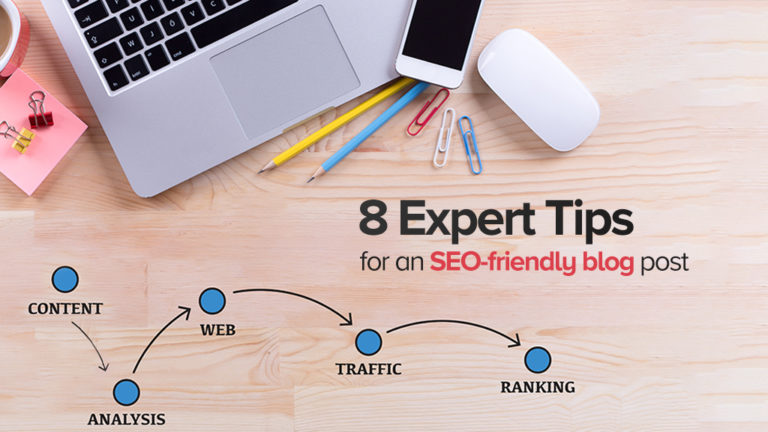Writing a successful SEO-friendly blog post is not an ordinary task, it requires the understanding of readability parameters so that it looks appealing to the audience.
WordPress and Yoast plug-in are two of the most effective tools that identify whether you’ve created an SEO-friendly blog or not.
Improving writing skills is the pre-requisite for improving your Google ranking.
Here are 8 expert writing techniques to craft an SEO-friendly blog post:
Filling your content with the keywords is not a clever practice now, a keyword-stuffed content seems bogus to Google crawlers as it affects the readability.
- Conduct a good-deal research before you begin
Many beginners start writing whatever pops into their minds regardless of the correctness of information. For an SEO-friendly blog, you need to provide information that is relevant to the topic and is useful for the audience.
Ponder upon the purpose of your blog and then try to fulfill that very purpose. What will the readers gain after reading your blog?
A blog that answers a question or resolves a query is considered to be an SEO-friendly blog.
- Pay attention to the structure of your content
It’s the same rule of thumb that we had already learnet in schools and colleges. Divide your content into parts;
- An introduction – providing with the background of the topic or the problem
- A body – it’s the core of the content providing with the main message which is actually supposed to be delivered
- A conclusion – providing with the key ideas of the content summarizing the content and presenting an answer to a question.
The structuring enhances the readability, therefore a content appears to be an SEO-friendly blog.
For instance, if you’re writing a blog post on Android vs iOS, then by reaching the conclusion, the reader must be able to form a decision that which operating system is better for him or her.
- Incorporate paragraphs
Paragraphs are a sort of refreshers for the readers; they minimize the monotony of the content. Though paragraphing is helpful, it doesn’t mean that you irrelevantly add them in the content.
Every paragraph must have a new idea and fresh information linked to the previous one, maintain the comprehensiveness of the content.
It makes the content interesting for the readers and Google crawlers filter out key ideas; this makes it an SEO-friendly blog.
- Use headlines in your content
Titles and headlines serve as the lifeblood for an SEO-friendly blog. Who reads an 800 or 1200 words long articles? Most of the readers don’t, they just go through them.
Headings with a clear indication about what’s under them help the readers to summarize the content and go to the part that is relevant for them.
It also helps Google crawlers to encapsulate the content. Headings normally go from H1 to H6, which refer to the title and the sub-headings.
- Use indicators
Indicators are the signal words that redirect the readers to the main idea or purpose of the content. ‘Initially’, ‘eventually’, ‘consequently’, and ‘nevertheless’ are few of the indicators.
If you’ve explained the features or reasons for anything, then ‘first of all’, ‘secondly’, and ‘lastly’ would be your indicators.
They prove to be extremely helpful and appealing to the readers and enhance the readability of the content.
- Amplify your article length
Previously a 300 to 500 words lengthy content was considered sufficient to fulfill SEO requirements, but the time has changed. To be an SEO-friendly blog, Google now suggests that the content must be between 600 to 1000 words.
If you go beyond that and reach the level of 1500 to 2000 words, that’s even better. With that, maintain the density of your focus keyword within 1% to 3% of the article.
- Build authority by creating links
Add links between the articles that you’ve written on similar topics or if an article consists a part of another one. Link building seems good to Google crawlers as it enhances the authority of your blog and provides additional information to the readers.
- Install the Yoast SEO plug-in
The Yoast plug-in assists you in creating an SEO-friendly blog by identifying the goods and bads of your content.
- It calculates the density of your focus keywords
- It suggests you to add links and images in the content
- It helps you to improve your title and add meta description for the content
- It calculates the Flesch reading ease score for you (checks the readability of the content)
Key instructions for high Flesh reading ease score;
- Content should have titles and sub-headings
- Content should have paragraphs
- A paragraph must not exceed the word limit of 100 words
- A paragraph must not have more than 5 to 6 sentences
- A sentence must not exceed the word limit o 20 words.
All the above-mentioned tips and techniques will help anyone in creating a successful SEO-friendly blog post which will be attractive for the readers and will enhance your Google ranking.


